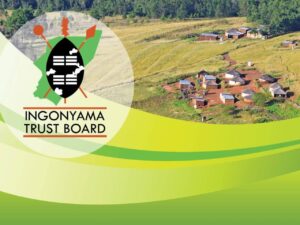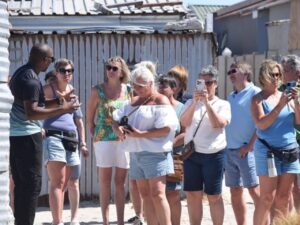[imagesource:aljazeera]
There are currently hundreds if not thousands of miners trapped underground in an abandoned gold mine in the town of Stilfontein in South Africa.
Local campaigners say as many as 4,000 miners entered the gold mine in the town in North West province, and some are feared to now be physically too frail to exit the mine. Police, on the other hand, are downplaying the figure, estimating it to be in the hundreds.
Authorities warned that any miners daring to surface would face arrest, heightening the tense standoff, with some miners initially refusing to come up because they were working illegally and were concerned about jail time or possible deportation.
The miners are reportedly starving, as police restricted supplies in a bid to force the hoards of people to emerge, according to a community leader and a miner rescued on Friday, per Al Jazeera.
“There’s nothing left for someone to eat, to drink or anything that can make a human being survive. There is nothing left underground for now,” Ayanda Ndabeni, 35, who was hoisted out of the shaft on Friday, said on Sunday.
In the past week, about a dozen people have resurfaced from the mine after the authorities blocked locals from lowering food and water in a nearly two-week push to empty the shaft.
The authorities also closed the entrance shaft of the mine, saying the move aimed to “smoke out” the miners in an operation called Close the Hole amid efforts to clamp down on the use of the mines without government permits.
“We are not sending help to criminals. Criminals are not to be helped,” said Khumbudzo Ntshavheni, a minister in the presidency, on Wednesday.
In a dramatic shift, the government changed course on Friday, announcing the formation of a specialised team, including mine rescue experts, to devise a plan to bring the trapped miners back to safety.
The Stilfontein gold mine plunges more than 2,500 metres below ground, where temperatures can soar above 50°C and oxygen levels plummet to perilous lows. Toxic gases like methane and carbon monoxide fill the air, adding to the grave health risks. Rescue efforts are further complicated by the mine’s narrow, unstable tunnels, demanding advanced equipment and expert teams to navigate the deadly environment.
Rescue operations involving volunteers were underway on Sunday, according to Al Jazeera correspondent Haru Mutasa, reporting from the site. The men who were rescued emerged from the mine visibly frail, assisted by brave volunteers. Meanwhile, others remain trapped, too weak to make it to safety.
“Police are seen guarding the entrance to the abandoned mine, and they said that they are here to ensure that there are no criminal activities,” Mutasa said, noting that activists have been demanding that officers leave the area.
However, she explained that in the past, when police have carried out raids on these illegal mines, they’ve “arrested people who have been mining illegally” who “either go to court then go to jail if they are locals, if they are foreigners they get deported”.
“But the borders around South Africa are very, very porous. Basically, the police dump the people across the border (and) in a day or two, they’ll come back, link up with these criminal syndicates, and they’re back underground doing their mining,” she said.
The authorities’ initial “crackdown” on alleged illegal mining – starving them out – had caused outrage among rights groups and labour organisations.
“It is despicable that we have to have this kind of conversation about what to do in the situation involving poor, Black, weakened working-class people,” Mametlwe Sebei, a human rights lawyer, told Al Jazeera.
“They are in very hazardous and in very horrific conditions,” Sebei said, urging for the workers’ safe return.
Thembile Botman, a community leader, said the authorities did not do their due diligence in checking how many people were underground and how they could be rescued when they closed the shaft to the mine.
“If you just close it, for me, it means just burying whoever is underground,” he told Al Jazeera.
Under pressure from rights groups, police enlisted experts to evaluate the safety of the mine shafts to determine if a forced evacuation was possible. However, a Pretoria court ruling blocked this, requiring the police to lift the blockade and allow the miners to exit.
Mzukisi Jam of the South African National Civic Organisation welcomed the court’s decision but expressed disappointment that the government needed legal pressure to act. Community leader Johannes Qankase also praised the ruling, noting that locals successfully delivered 600 packets of instant porridge and 600 litres of water to the trapped miners on Saturday.
A lot of the men underground have families and have been forced into illegal work to make ends meet, made worse by the high rate of unemployment in the area, according to Botman, who also noted that the other operations would hire workers from Mozambique, Zimbabwe and other places instead of locals because of lower costs.
Thandeka Zizi Tom, the sister of a trapped miner, told Al Jazeera that her brother should have been back by now. “We are panicking. We don’t know what’s going to happen,” she said.
Since a police operation was launched to force miners out of the shaft, more than 1,170 people have resurfaced, police spokesperson Athlenda Mathe told reporters last week. On Thursday, a body was brought out of the mine.
[source:Aljazeera]





